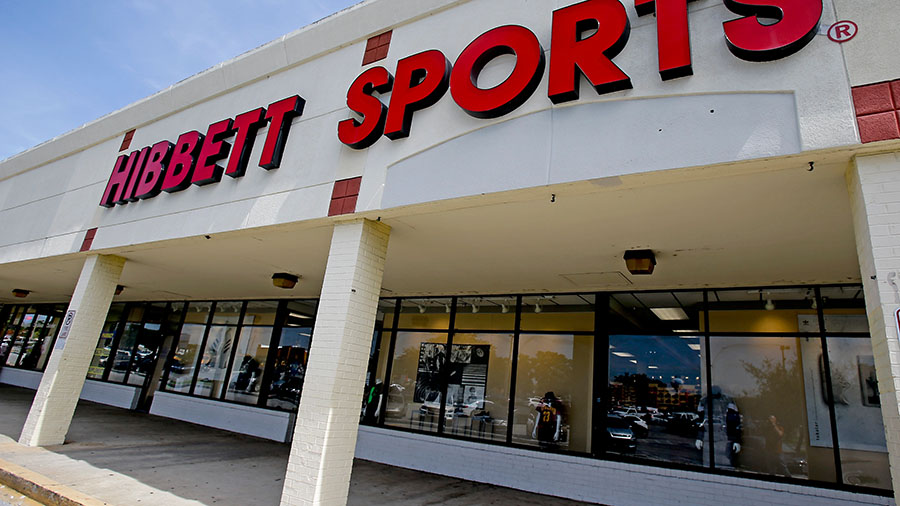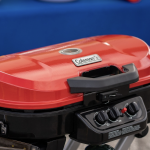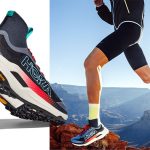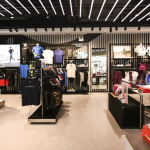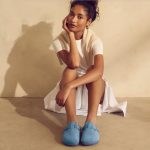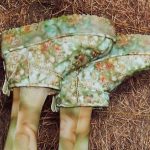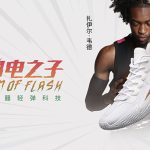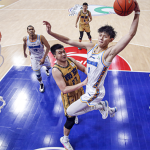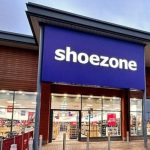Shares of Hibbett Inc. are down about 10 percent in mid-day trading Friday after the retailer reduced its full-year guidance as first-quarter sales missed plan and sales weakness continued into May. Promotions are expected at least through the third quarter to rebalance inventories.
“Our financial and operating results for the first quarter reflect the challenging retail environment,” Mike Longo, president and CEO, said on a call with analysts. “Our consumers face difficulties ranging from inflation to fears over job loss. This and other factors have combined to lower consumer sentiment and we think that adversely affects sales. Also, the important tax season in the first quarter was negatively affected by lower tax returns versus last year and caused sales coming in lower than our expectations.”
He noted that Hibbett still managed a 7.4 percent year-over-year sales gain, including 4.1 percent comp growth.
“We believe the sales resulted in increased share for Hibbett and is our reason for confidence in our business model,” said Longo. “Also, our strong relationships with our brand partners give us the ability and confidence to continue to execute our store opening plan. We continue to invest in our already best-in-class consumer experience and the business model while still taking costs out of the business.”
Sales in the quarter reached $455.5 million, below Wall Street’s consensus estimate of $460.4 million. The 4.1 percent same-store increase reflected a 4.7 percent gain in brick-and-mortar comparable sales and a 0.6 percent e-commerce gain. E-commerce represented 13.7 percent of total sales in the quarter, down from 14.6 percent a year ago.
Gross margins were down 330 basis points to 33.7 percent as product margin was down 375 basis points due to higher promotional activity across both footwear and apparel. Store occupancy was relatively flat as a percent of sales year-over-year while both freight and logistics operations were favorable as a percent of sales.
Store operating, selling and administrative (SG&A) expenses were reduced 140 basis points to 21.1 percent. Expense reduction initiatives, lower advertising spend and reduced incentive compensation expense partially offset wage inflation.
Net income dropped 8.7 percent to $35.9 million, or $2.74, short of Wall Street’s consensus estimate of $3.04.
Jared Briskin, EVP, merchandising, said the first quarter started strong with double-digit gains in the first half of the quarter. He added, “As March progressed, we began to see a deceleration in our comp performance and this deceleration continued to pressure the business into April.”
Footwear was the strongest category during the quarter, growing high teens versus the prior year. Briskin said the gains continue to be driven by “several solid launches as well as strength across basketball, lifestyle and casual categories. In addition, we saw an improving trend in our running business.”
Apparel and team sports were both negative for the quarter with apparel down in the low 20s. Approximately half of the apparel decline came from winter carryover in the prior year that was on anniversaried. Briskin said, “This was planned in order to ensure that our inventory was seasonally appropriate now that the supply chain is more predictable.”
He added on apparel, “Sales of spring and summer apparel started the season slowly and remain under pressure due to the consumer environment.”
Across footwear and apparel, men’s women’s and kids all comped positive, driven by footwear. Men’s and women’s both were up low-single digits, and kids, high-teens
“The slowdown of sales in the back half of the quarter, the continued promotional environment and a much more selective consumer prompted additional markdowns and promotional activity during the back half of the quarter,” said Briskin. “We expect this to continue at least through the third quarter as we work to reduce our inventory. These promotional efforts as well as support from our key brand partners will help us to achieve our goals for inventory reduction.”
Inventory at the end of the first quarter was up 39.1 percent year over year and ahead 4.1 percent from the beginning of the year. The majority of the increase year over year is due to inflation and product mix, including a heavier mix of footwear which carries a higher average unit cost. Inventory units were up approximately 8 percent year over year.
Briskin said, ‘Year over year inventory compares will still be volatile due to the challenges in the supply change during FY23. Our expectations remain the same for our inventory levels. We will have growth in the first half of the year and year-over-year declines in the second half.”
Hibbett’s updated guidance calls for:
- Total sales to be flat to up 2.0 percent (up mid-single digit previously);
- Same-store sales to be down low-single digit (up low-single digit previously);
- Brick and mortar sales to be flat to up low-single digit (down low-single digit previously);
- E-commerce to be down low-single digit (up high-single digit previously);
- Net store growth in units of 40 to 50 (same as previously);
- Gross margins in the range of 33.9 percent to 34.0 percent (34.9 percent to 35.0 percent previously);
- SG&A expenses in the range of 23.3 percent to 23.5 percent of sales (23.2 percent to 23.3 percent previously);
- Operating profit margin in the range of 7.4 percent to 7.8 percent (9.0 percent to 9.3 percent previously);
- Interest expense to increase to 0.40 percent to 0.45 percent of sales (0.25 percent to 0.30 percent previously); and
- EPS in the range of $7.00 to $7.75 ($9.50 to $10.00 previously).
The aggressive promotional climate is expected to have a heavier impact on the second quarter versus the third and fourth quarters since the second quarter is Hibbett’s smallest-volume quarter of the year. Briskin also suspects consumers will likely be delaying back-to-school spending and making more “last-minute” purchases due to money pressures, pushing some back-to-school sales to the third quarter from the second quarter.
Briskin said estimating an outlook remains challenging as Hibbett is still trying to understand “what our new normal is” from a post-pandemic perspective.
“Really understanding how that looks quarter over quarter, period over period, it’s become quite a forecasting challenge,” said Briskin. “Then you add in the volatility of the consumer and the volatility of our back-to-school business, which always crosses between the second and third quarter. So, all of those things are causing us to be very conservative.”
Longo said, “We believe we have a proven operating model that will support our business regardless of market conditions. And we remain committed to executing our strategy of focusing on our distinct competitive advantages, namely our customer service, compelling product selection, best-in-class omni-channel experience and our positioning in underserved markets. In summary, we believe Hibbett is well positioned for the short long term to continue to grow and increase market share.”

